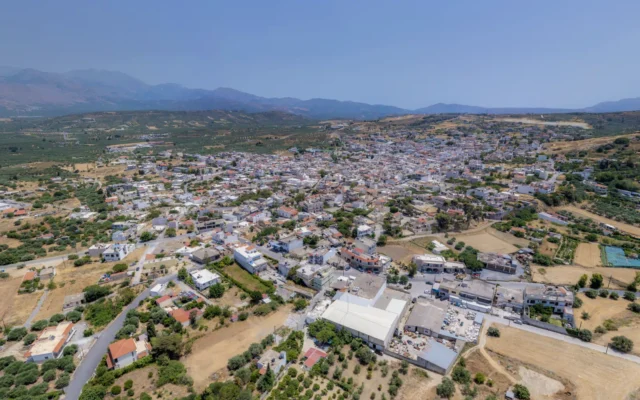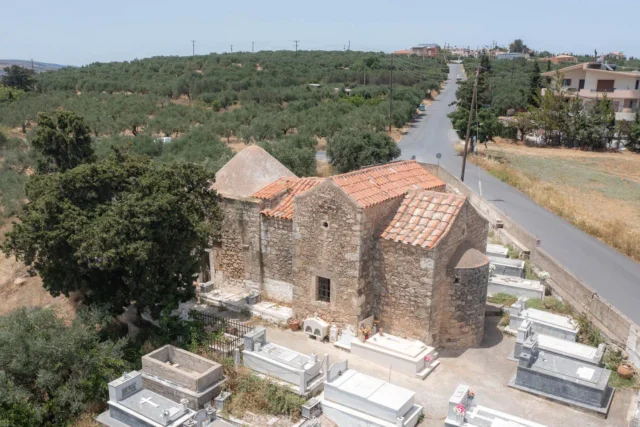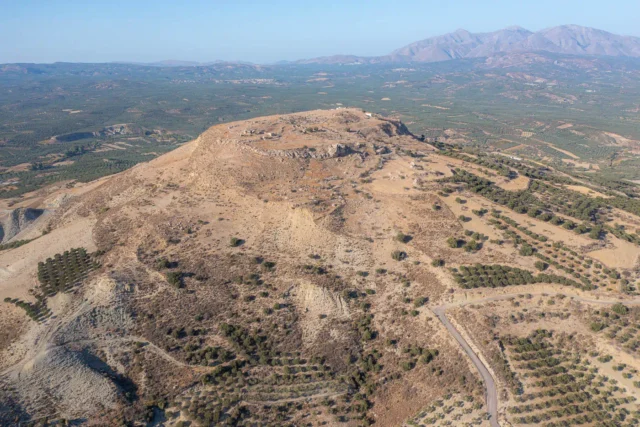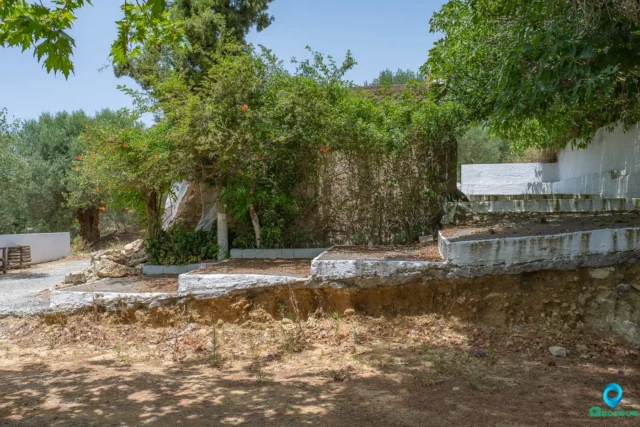
Kassanoi, also known as Kassani or Kasanos, is a village situated on the western slopes of the Lasithi Mountains in the Heraklion regional unit of Crete, Greece. It serves as the administrative center of the Kassanoi community within the Minoa Pediada Municipality. The village is perched on a hill, offering panoramic views of the surrounding landscape.
Economy and Culture
The primary occupations of the residents are olive cultivation and the cultivation of citrus fruits in the valley west of the village. Kassanoi is also known for its onions, and an annual festival celebrates this local produce.
The village has an active cultural association and is home to the Byzantine church of Sotiros Christos (Christ the Savior). The central church in the village is dedicated to Saint George.
Etymology and History
The village is mentioned in Venetian censuses, specifically in Kastrofylakas in 1583 as “Cassanus” with 84 inhabitants. The name “Kassanoi” (plural) is considered more accurate than the singular form “Kasanos.” The name likely originates from the surname of a Jewish family documented in 14th-century records, suggesting a possible connection to the village’s early settlers. Another theory proposes that the village was founded by Italian settlers, as there are toponyms in Italy with the same name.
Archaeological findings from illicit excavations around the village indicate the presence of ancient settlements in the area. The churches of Panagia (Virgin Mary) and Agia Kyriaki (Saint Kyriaki) contain noteworthy frescoes.
Church of Sotiros Christos
A short distance southwest of Kassanoi, near the old village fountain, stands the single-nave vaulted church of Sotiros Christos, dedicated to the Nativity of Jesus. It was built on the site of an older church, as evidenced by the stepped configuration of the sanctuary’s apse. The interior preserves three layers of iconographic decoration, representing three distinct phases of Cretan hagiography. The first layer, from the late 13th century, includes the frescoes in the sanctuary’s conch. The second layer, from the early 14th century, features the Ascension on the vault of the main church. The third layer, from the early 15th century, comprises the frescoes on the vault and side walls of the sanctuary.
The iconographic program includes several scenes from the Christological cycle. Other notable depictions include the Communion of Saint Mary of Egypt by the monk Zosimas to the right of the entrance, the rare image of the mounted Saint Constantine with the Holy Cross on his shoulder alongside other mounted saints on the north wall, and the Presentation of the Virgin Mary in the sanctuary.
Village Key Points
- Historical References: Mentioned in Venetian censuses from 1583 onwards
- Location: Western slopes of the Lasithi Mountains, Heraklion regional unit, Crete, Greece
- Dimensions: Village
- Historical Significance: Potential connection to a Jewish family or Italian settlers, Byzantine church with well-preserved frescoes
- Population data over the years:
- 1583 (Kastrofylakas): 84
- 2011: 212 (part of the Kassanoi Community with a total population of 471)
- Current Status: Village with a focus on agriculture (olive cultivation and citrus fruits) and pottery.
Access
Kassanoi is 6.6 kilometers away from the town Arkalochori and 9.9 kilometers away from Thrapsano


























There are no comments yet.